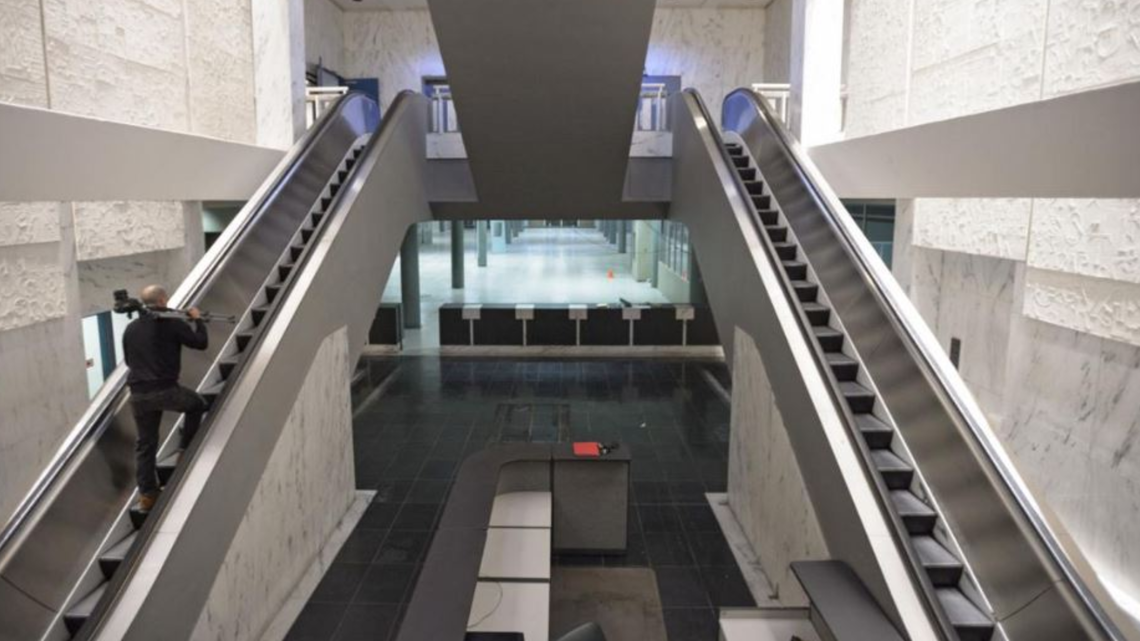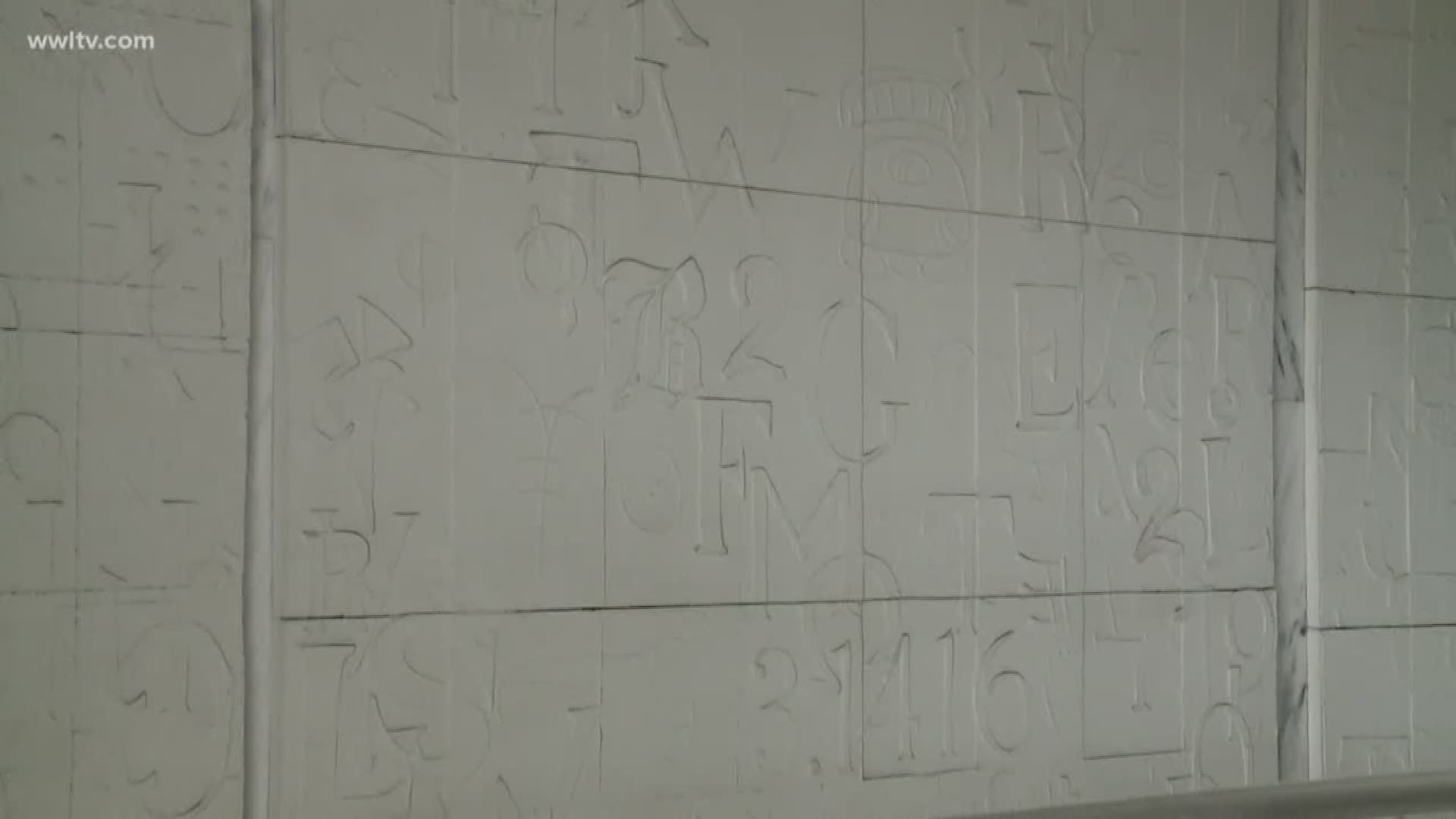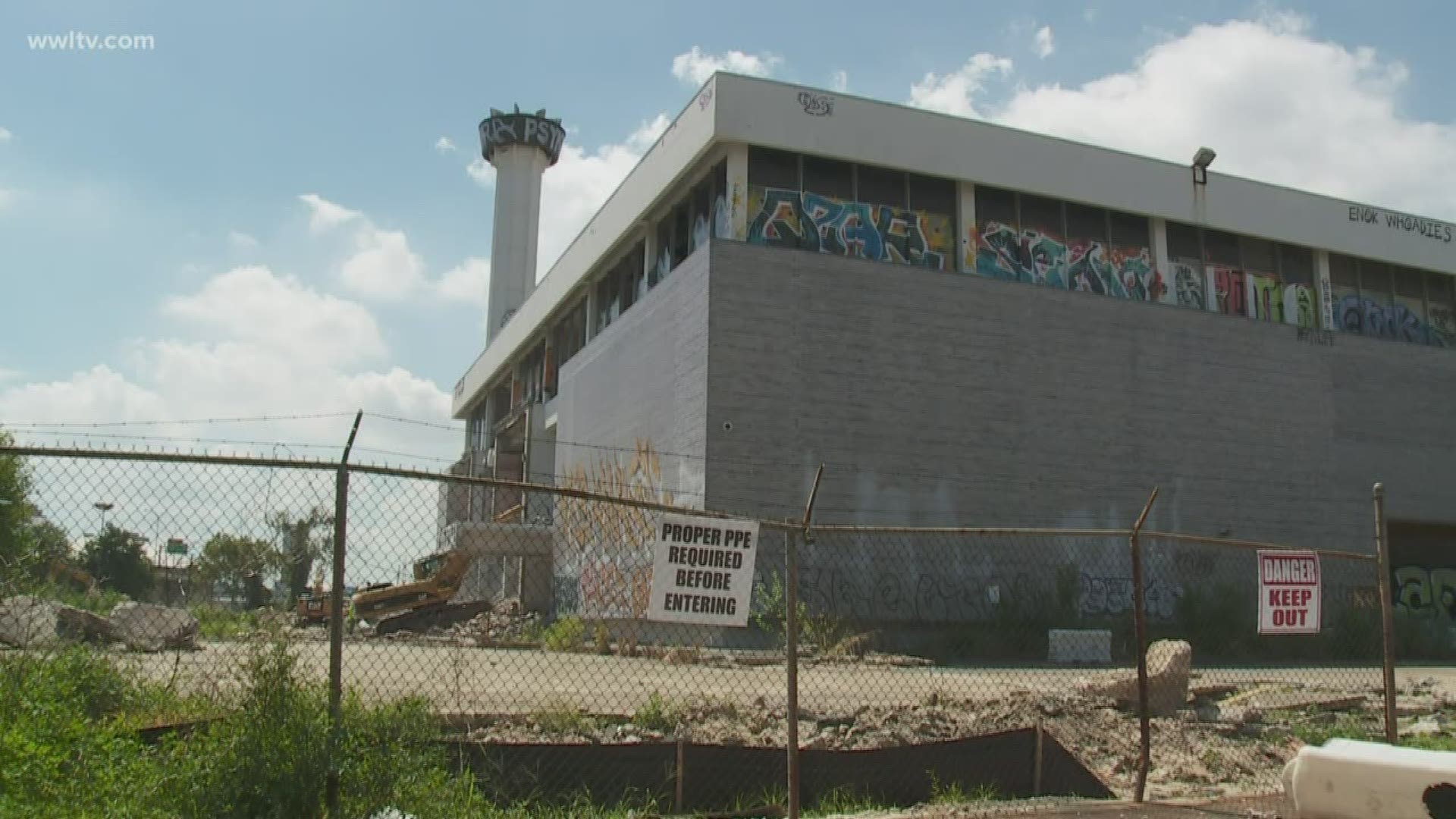NEW ORLEANS — Saved from the wrecking ball that took down its former home inside the old Times-Picayune building, a gigantic plaster relief mural by noted artist Enrique Alferez has been without a permanent home for the past two years.
On Tuesday, the New Orleans Museum of Art announced that the mural, entitled "Symbols of Communication," has been donated to the museum. It will be centrally featured in a renovation of NOMA's auditorium.
The mural was created for display in the newspaper's former Howard Avenue building in 1967. In 2016, businessmen Joe Jaeger, Barry Kern and Arnold Kirschman, purchased the property and eventually demolished it to make way for a golf driving range and entertainment venue. After hiring crews to save the mural inside, they have now donated it to the museum.


In 2018, crews began the delicate process of removing the mural and its plaster panels, a process complicated by how they are anchored into the walls. As they worked, a conservator catalogued the pieces, each weighing about 200 pounds, before they were stored in wooden crates. It was uncertain where the murals would end up, however.
The murals were commissioned to decorate what would otherwise be tall, drab walls in the newspaper building’s lobby.
“He (Alferez) knew that the elements used in any design must have some significance in the communication media,” read an article in a special section printed when The Times-Picayune and The States-Item, its afternoon counterpart, moved into the building in 1967.
“He used the hieroglyphics of the ancient Egyptians and the dots and dashes of the Morse code; he employed Mayan glyphs, cuneiform characters and alphabets from Phoenician, Roman and gothic times,” the article continues. “The Hebrew of the torahs, the graceful writings of the Arabs, and the fine brushwork of the Chinese and Japanese are all included as are the Braille symbols that enable the blind to read.”
All of that was included in 14 panels, several of which measure 37 feet tall and 8 feet wide.
The work to create the murals was tedious and, at times, nerve wracking, Tlaloc Alferez, Enrique Alferez’s daughter told The New Orleans Advocate.
She recalled how Alferez assembled the murals in a friend's warehouse. "Every hour a train came by on the Elysian Fields overpass, shaking and vibrating the unfinished piece, while my father lay on top of it to protect it," she told the newspaper.
She said the project was particularly personal for her father who fled his home country, without speaking a word of English, after serving in the Revolutionary Forces in northern Mexico under several generals including Pancho Villa.
“With nothing more than a Spanish-English dictionary, he taught himself English by studying the comics in the newspaper every day," she told The Advocate. "While at the Art Institute in Chicago, he radically improved his English before later coming to live in New Orleans.”


Once in New Orleans, Alferez, who was born in Mexico in 1901 and first came to New Orleans in 1929, created works that wound up everywhere from Charity Hospital to Lakefront Airport. Many were done for City Park during the Works Progress Administration. He died in 1999.
While the murals have a new home, work on the Drive Shack golf project, which was scheduled to open before the end of 2019, has stalled during the coronavirus pandemic.
The Times-Picayune/New Orleans Advocate, with whom WWL-TV has a content sharing partnership, is now located in offices at 840 St. Charles Avenue. The paper's former owners, NOLA Media Group, vacated the Howard Ave. plant after cutting back on the paper's print production schedule and laying off more than 200 workers. The Times-Picayune was sold to businessman John Georges, owner of The New Orleans Advocate, last year.
► Get breaking news from your neighborhood delivered directly to you by downloading the new FREE WWL-TV News app now in the IOS App Store or Google Play.


